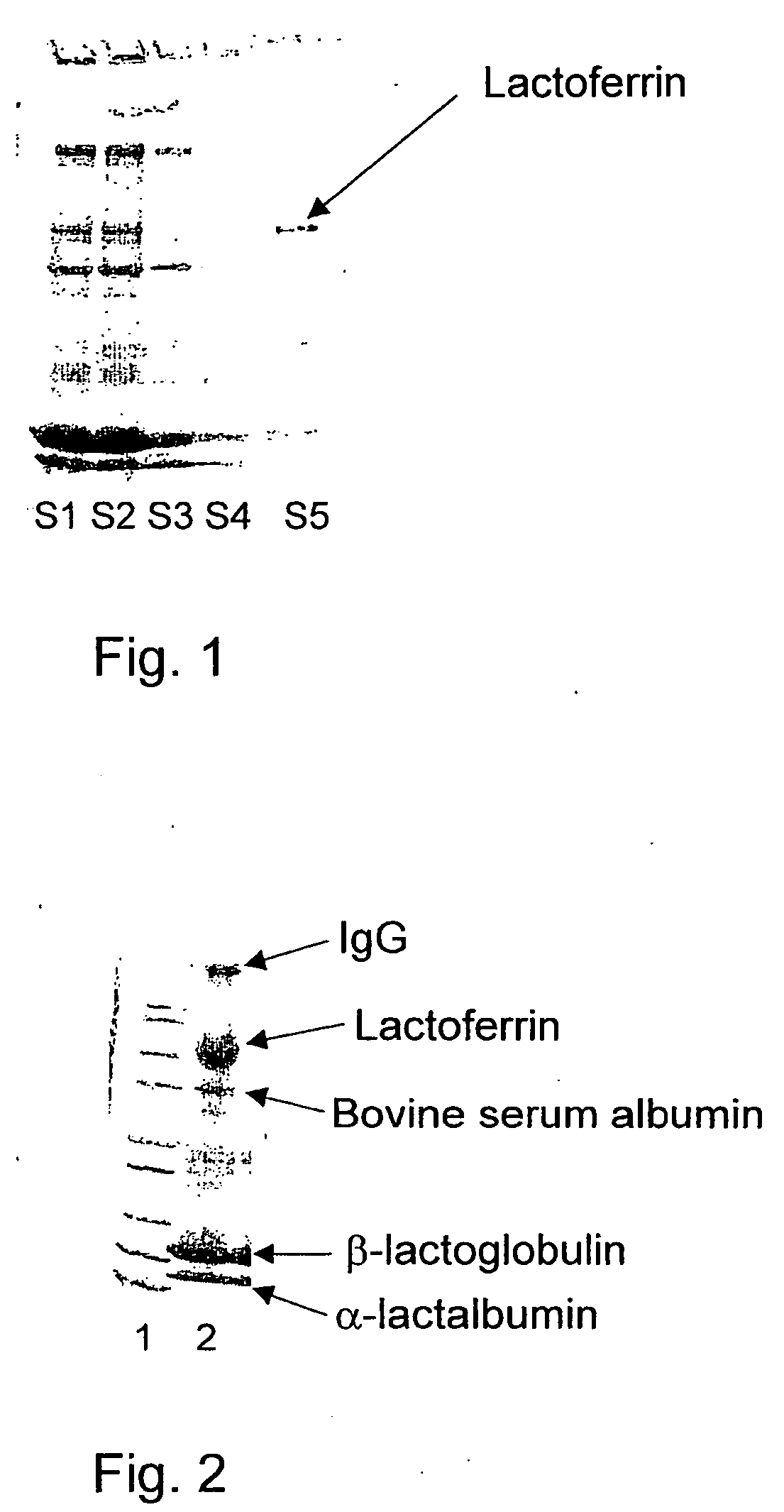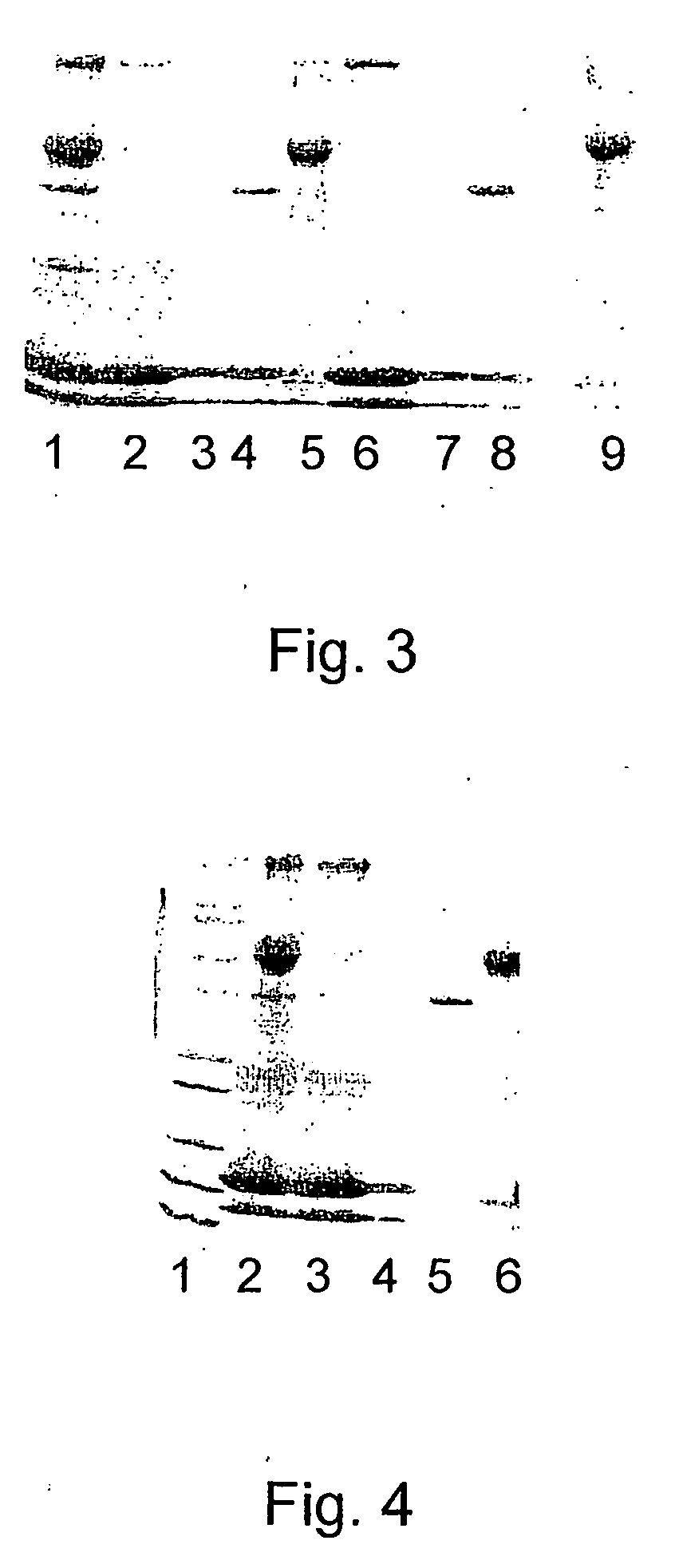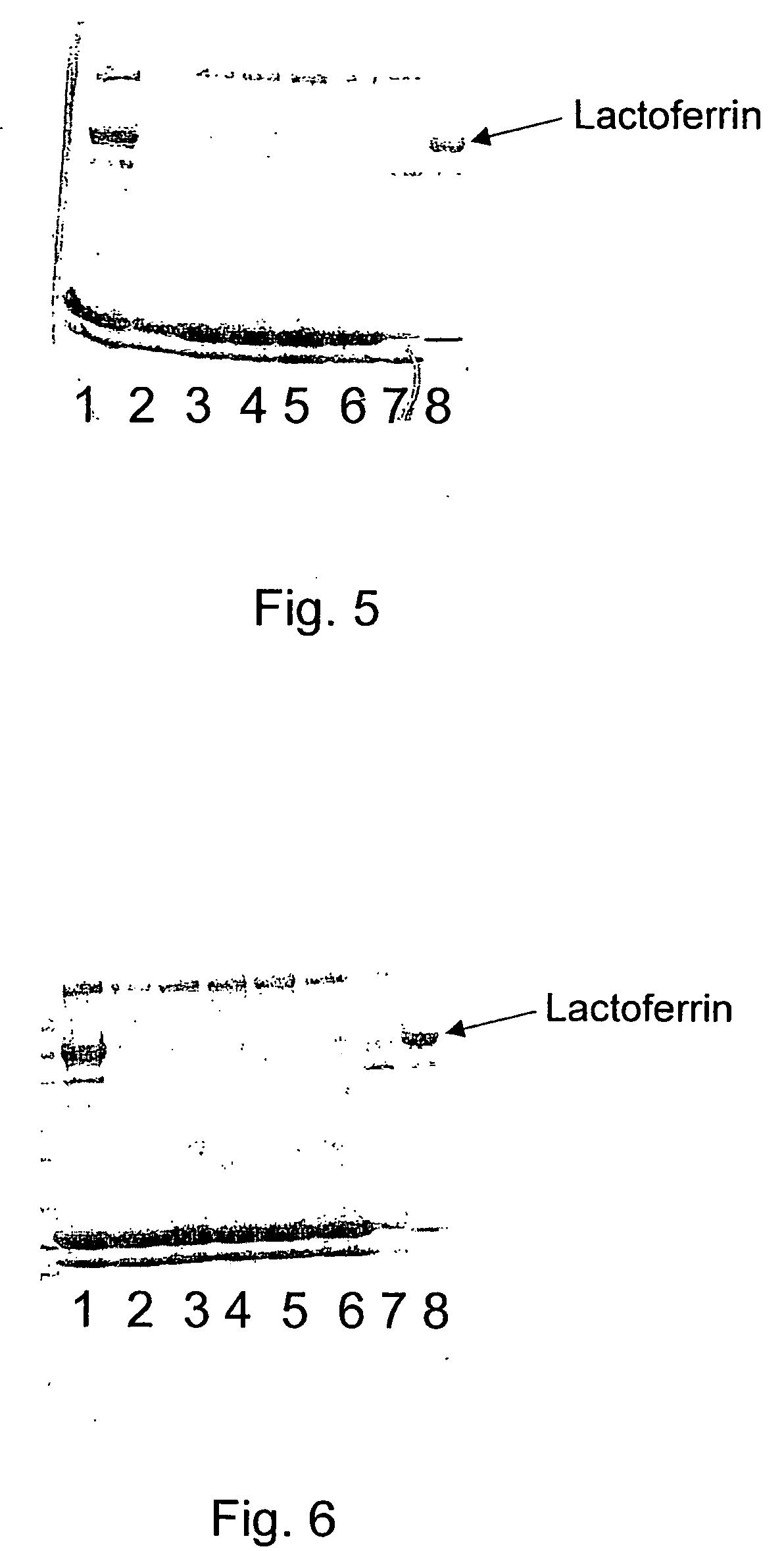Process of isolating lactoferrin
a technology of lactoferrin and isolating process, which is applied in the field of isolating proteins, can solve the problems of water expulsion, difficult disposal, and problem of discarding products, and achieve the effects of low cost, high production cost, and simple and low cost process
- Summary
- Abstract
- Description
- Claims
- Application Information
AI Technical Summary
Benefits of technology
Problems solved by technology
Method used
Image
Examples
example 1
Isolation of Lactoferrin from Precipitated Skim Milk.
[0105] Skim milk pasteurised at 72° C. was adjusted to pH 4.5 with 1N HCl under thorough stirring and left overnight at 4-8° C. to let the precipitated caseins sediment.
[0106] The next day most of the supernatant (S1) was removed by decanting and a sample of the loose precipitate (10 ml) was withdrawn of the casein precipitate and centrifuged for 5 minutes at 2000 G.
[0107] The supernatant (52) from the centrifuged sample was removed and the casein pellet (approx 2 ml) was washed by adding 8 ml 10 mN sodium acetate buffer pH 4.5, mixed carefully with the precipitated casein followed by repeated centrifugation for 5 minutes at 2000 G. The wash with sodium acetate buffer was repeated twice and the supernatants from the washing steps were labelled 53 and S4.
[0108] After the second wash the casein pellet was added 1 ml 3N NaCl to get a final concentration of 1N NaCl and following thorough mixing the sample was centrifuged for 5 mi...
example 2
Isolation of Lactoferrin from the Extract Medium After Extraction of the Precipitated Casein, by Using Packed Bed Chromatography.
[0114] Refining of the extract medium after extraction of the precipitated casein comprising lactoferrin (LF) with packed bed adsorbent chromatography: The extract medium after extraction of the precipitated casein was obtained from a local cheese production and where analysed to have a pH of 5.5 and a conductivity of 54.5 mS / cm.
[0115] As can be seen on the analysis result the extract medium after extraction of the precipitated casein has a very high concentration of lactoferrin (compare e.g. to whey as obtained from skim milk in example 1, FIG. 1. Lane 1).
[0116] Experiments were performed to isolate lactoferrin by adsorption chromatography from the extract medium after extraction of the precipitated casein at three different pH-values.
Adsorbent
XpressLine Pro A, UpFront Chromatography A / S,
[0117] The adsorbent comprises an aromatic acid ligand and ...
example 3
Isolation of Lactoferrin from the Extract Medium After Extraction of the Precipitated Casein, by using Expanded Bed Adsorption.
[0134] Refining of the extract medium after extraction of the precipitated casein comprising lactoferrin (LF) with expanded bed adsorption chromatography at 25° C.:
[0135] An extract medium after extraction of precipitated casein was obtained from a cheese production facility and was analysed to have a pH of 5.6 and a conductivity of 53 mS / cm. The extract medium was obtained by washing the initially obtained cheese curd (precipitated casein) with a solution of sodium chloride whereby a solution of lactoferrin enriched salty whey was obtained by draining.
Adsorbent
[0136] FastLine SALTO, product number 1233-0100 UpFront Chromatography.
[0137] The adsorbent is agarose based with tungsten carbide particles incorporated resulting in a density of approximately 2.8 g / ml. The particle size is in the range of 40-200 μm.
[0138] The adsorbent comprises an aromatic ...
PUM
| Property | Measurement | Unit |
|---|---|---|
| concentration | aaaaa | aaaaa |
| concentration | aaaaa | aaaaa |
| pH | aaaaa | aaaaa |
Abstract
Description
Claims
Application Information
 Login to View More
Login to View More - R&D
- Intellectual Property
- Life Sciences
- Materials
- Tech Scout
- Unparalleled Data Quality
- Higher Quality Content
- 60% Fewer Hallucinations
Browse by: Latest US Patents, China's latest patents, Technical Efficacy Thesaurus, Application Domain, Technology Topic, Popular Technical Reports.
© 2025 PatSnap. All rights reserved.Legal|Privacy policy|Modern Slavery Act Transparency Statement|Sitemap|About US| Contact US: help@patsnap.com



